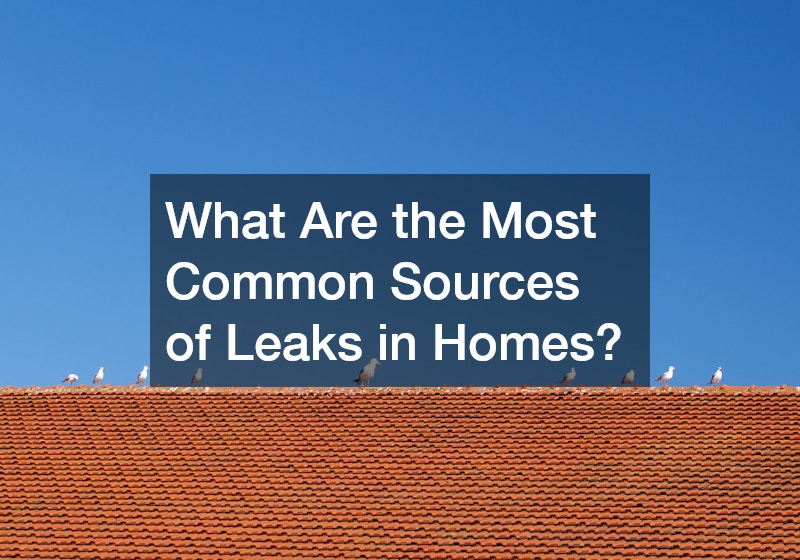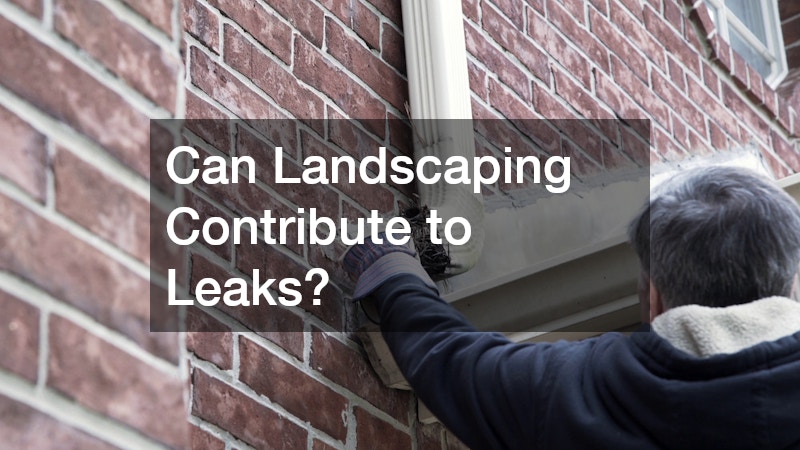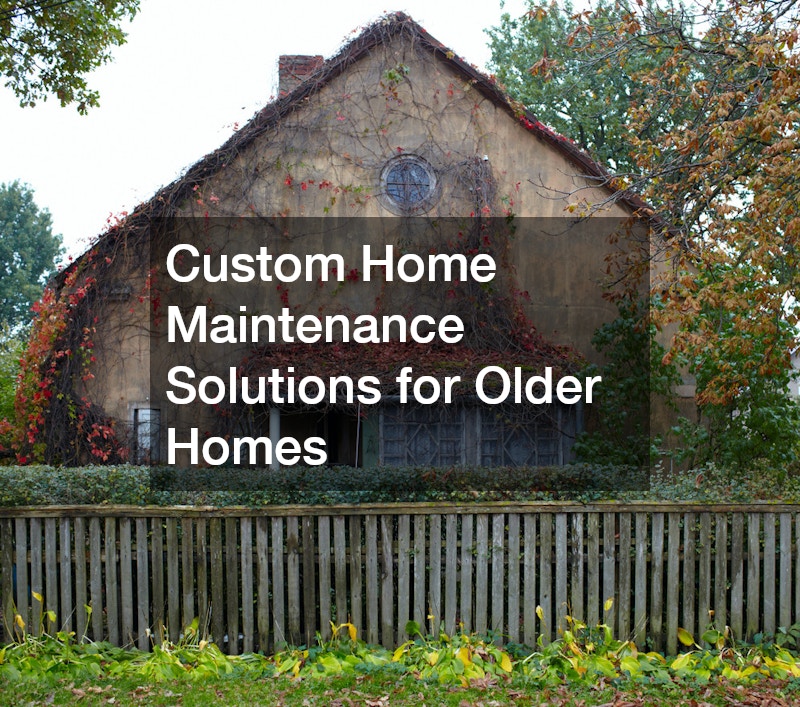In every home, water damage is one of the most expensive and frustrating problems to deal with. Small drips and hidden moisture can quietly cause extensive structural issues, mold growth, and costly repairs. The good news? With a bit of planning and attention, homeowners can stay ahead of these problems. This guide explores easy home repairs that stop leaks before they start—focusing on preventive steps that keep your roof, gutters, and plumbing systems working together in harmony.
Preventing leaks doesn’t always require a full renovation or expensive overhaul. Many easy home repairs can be handled by homeowners with basic tools and a willingness to learn. For example, staying proactive about maintenance like replacing a worn washer, checking your roof flashing, or keeping your gutter cover clear can make a significant difference. In other cases, hiring local roofers or a roofing service for annual inspections can prevent far more costly issues later. Whether you’re patching minor plumbing leaks or insulating your attic, the goal is the same: to stop moisture before it becomes a threat to your home’s structure.
What Are the Most Common Sources of Leaks in Homes?

Understanding Plumbing Systems
Your home’s plumbing is a network of pipes that runs through walls, floors, and ceilings. Leaks often start in high-pressure joints or areas with frequent temperature changes. Over time, even minor drips can cause water stains, soft walls, or damaged flooring. Easy home repairs such as replacing worn washers, tightening loose joints, or re-sealing pipe threads can often fix these problems without professional help.
Still, not every issue is DIY-friendly. When leaks stem from aging pipes or inaccessible lines, it’s best to contact a plumbing contractor. These professionals can inspect the entire system, identify weak spots, and prevent recurring leaks. Homeowners should also check nearby features—like home siding or attic insulation—that might be affected by moisture escaping from interior pipes. A neglected leak near the roofline, for instance, can travel down and damage siding or insulation. Working with local roofers can help ensure that roof flashing and vent connections don’t let water infiltrate these areas.
Roofing Issues
Roof leaks are among the most common household water problems. They can start from damaged shingles, cracked flashing, or clogged gutters. Even a small gap can allow rainwater to seep in, leading to warped wood, ceiling stains, and mold. Easy home repairs like clearing debris from gutters or inspecting the attic after a heavy storm can catch early warning signs.
However, sometimes a more comprehensive approach is needed. Hiring a roof specialist or local residential roofer can help diagnose roof deterioration before it worsens. They can perform minor roof installs or patchwork to seal leaks quickly. In regions with seasonal weather shifts, these professionals can also recommend proper attic insulation to prevent condensation buildup during winter. Investing in a roofing service for regular inspections—especially before heavy rain or snowfall—can save you from major roof replacement service costs down the line.
Foundation Problems
Your home’s foundation can also be a hidden source of leaks. Small cracks or poor drainage can allow groundwater to seep in, damaging basements and crawl spaces. If you notice dampness near the floor or musty odors, it’s time to take action. Easy home repairs like re-sealing visible cracks with hydraulic cement or redirecting downspouts away from the home can make a big difference.
Water from clogged gutters often runs down exterior walls, saturating the soil around the foundation. That’s why maintaining a clean gutter cover and hiring a reliable gutter guard installer is so crucial. These simple measures prevent overflow that can erode soil or cause water to collect near the base of your home. Local roofers and siding professionals often work together to ensure proper drainage along the roofline and walls, keeping the entire system leak-free.
How Can I Check for Leaks in My Home?
Visual Inspections
During your exterior walkthrough, pay attention to roofing materials, gutters, and home siding. Cracked siding panels or missing roof shingles can open the door for water intrusion. If you’re unsure where to look, a local residential roofer or roofing service can guide you through a seasonal maintenance checklist. Remember, easy home repairs like resealing a window or caulking siding joints can prevent big issues down the road.
Water Meter Testing
If you suspect a hidden leak, turn off all water-using appliances and check your water meter. Note the reading, then wait about 30 minutes without using water. If the number changes, there’s likely a leak somewhere in the system. This simple test can help narrow down the problem before calling a plumber.
For instance, if the meter changes but no visible leaks are found, the culprit could be in underground lines or attic pipes. Local roofers might even help identify whether roof flashing or attic insulation moisture is contributing to the issue. Easy home repairs—like sealing pipe joints or replacing an aging washer—can address smaller leaks once identified, preventing larger water damage later.
Professional Leak Detection Services
Sometimes, even thorough checks won’t locate the problem. That’s when professional leak detection services come in handy. They use specialized tools like moisture sensors and infrared cameras to identify hidden leaks within walls, roofs, and foundations.
If a roof leak is suspected, a roof specialist or roof replacement service can conduct targeted testing. Similarly, gutter guard installers can evaluate whether overflow or gutter blockages are allowing water to seep behind your home siding. These inspections often uncover underlying issues that simple repairs can fix before structural damage occurs. Combining expert evaluations with easy home repairs ensures that your home remains dry, efficient, and well-protected year-round.
What Are Some Preventative Measures for Avoiding Leaks?

Regular Maintenance Schedule
Preventative maintenance is one of the most effective ways to avoid leaks. Setting a seasonal checklist ensures you don’t overlook key areas like the roof, gutters, siding, and plumbing. Check the roof for missing shingles, clean gutters and gutter covers, and inspect plumbing fixtures for slow drips or corrosion.
Easy home repairs completed on a routine basis help identify potential problems early. For instance, scheduling annual roof inspections from local roofers or a roofing service can help catch damaged flashing or loose shingles before they lead to leaks. Similarly, inspecting attic insulation ensures moisture doesn’t collect under the roof deck. Taking these proactive steps creates a maintenance rhythm that minimizes risk and maximizes your home’s longevity.
Insulating Pipes
Pipe insulation is an underrated yet essential step in preventing leaks, especially in colder climates. When water freezes inside uninsulated pipes, it expands and can cause ruptures. Foam or fiberglass insulation sleeves are easy to install and prevent these temperature-related leaks.
Easy home repairs like adding insulation to vulnerable areas—such as basements, crawl spaces, and garages—can dramatically reduce the chance of burst pipes. Additionally, checking attic insulation helps prevent condensation that might drip into ceilings or walls. If you notice signs of moisture above living areas, it could indicate roof issues that local residential roofers or a roof specialist should inspect. Keeping both your plumbing and roofing systems properly insulated ensures full-home protection.
Keeping Gutters Clear
Clogged gutters are a direct path to water damage. When gutters overflow, water seeps behind home siding, damages fascia boards, and can even leak into the foundation. Cleaning them out at least twice a year—preferably in spring and fall—is one of the most straightforward easy home repairs a homeowner can do.
Installing gutter covers or hiring a professional gutter guard installer can drastically reduce maintenance needs. These additions help keep leaves and debris out while maintaining proper water flow. Regularly inspect downspouts to ensure they direct water at least five feet away from your foundation. Pairing this with roof maintenance from a roofing service keeps your home’s drainage system performing optimally all year.
How Do Winter Conditions Affect Leaks?
Frozen Pipes
Winter poses serious risks for plumbing systems. When pipes freeze, the pressure inside them can cause cracks or full ruptures. Even a small split can release gallons of water once thawed. Wrapping pipes in insulation and sealing drafts around exterior walls are easy home repairs that help avoid disaster.
In homes with attics or crawl spaces, proper attic insulation is crucial. It maintains a stable temperature and reduces the risk of freezing pipes. If you’ve had roof leaks in the past, a roof specialist or local roofers can inspect for gaps that allow cold air in. Addressing these vulnerabilities with a roofing service early in the season is the best way to avoid costly wintertime water damage.
Condensation Issues
Another winter concern is condensation, which forms when warm indoor air meets cold surfaces. This often happens on windows, uninsulated pipes, and attic ceilings. Over time, that moisture can cause mildew, peeling paint, and leaks. Adding insulation and improving ventilation are easy home repairs that reduce this risk.
If you find persistent dampness near ceilings or around vents, your roof may not be venting properly. Local residential roofers can check the airflow and attic insulation to balance temperature differences. These small maintenance steps, paired with gutter cleaning and siding inspections, help your home withstand the challenges of winter moisture.
Snow Accumulation and Roof Integrity
Snow can put tremendous stress on your roof. When snow melts and refreezes, ice dams form, trapping water under shingles and leading to leaks. Easy home repairs such as clearing gutters before the season and improving attic ventilation can make a big difference.
If your area receives heavy snowfall, consider hiring a roof specialist to inspect the roof’s load-bearing condition. They may recommend reinforcing areas or scheduling a roof install to handle winter weight safely. In some cases, local roofers may apply heat cables near the roof edge to prevent ice dams. Regular inspections and professional help ensure your roofing service keeps the structure safe and watertight through every season.
Can Landscaping Contribute to Leaks?

Water Drainage Systems
Landscaping plays a surprisingly large role in leak prevention. Poor grading, clogged drains, or overwatering can direct moisture toward your foundation. Ensuring that your yard slopes slightly away from the house is one of the most effective easy home repairs for preventing water intrusion.
Installing French drains or extending downspouts are other smart fixes. Gutter guard installers can help ensure that rainwater flows smoothly from roof to yard without pooling near the home. Regularly maintaining drainage systems complements other improvements like sturdy home siding and well-sealed foundations, creating a strong barrier against leaks.
Plant Placement
The plants in your yard can either protect or damage your home’s water systems. Trees and large shrubs with deep roots can crack pipes or disrupt foundations if planted too close. Easy home repairs in this area include relocating high-risk plants and using root barriers to prevent future issues.
Consulting with local roofers or exterior contractors ensures you’re protecting the roofline and siding from overgrown vegetation. Trim back branches that hang near the roof or touch gutters, as they can trap debris and lead to clogs. Proper landscaping maintenance works hand in hand with your roof replacement service and gutter maintenance to protect your home’s structure.
Maintenance of Sprinkler Systems
Sprinkler systems are another potential source of leaks. Broken sprinkler heads, misaligned sprays, or underground pipe cracks can waste water and saturate soil near the foundation. Seasonal checks and prompt repairs are essential easy home repairs that keep your yard and home dry.
Inspect sprinkler heads in early spring, ensuring they spray away from siding and foundation walls. If water pressure drops suddenly, there may be a hidden underground leak. Combine these checks with your roofing and gutter maintenance schedule. When all exterior systems—from sprinklers to gutters to roofs—work efficiently, the risk of leaks drops significantly.
How Can I Educate Myself About Home Repairs?

Online Resources and Tutorials
Today, homeowners have endless resources at their fingertips. Platforms like YouTube, home improvement blogs, and manufacturer websites offer step-by-step guides for nearly any repair imaginable. Watching tutorials before tackling easy home repairs builds confidence and reduces mistakes.
Many roofing companies also share valuable insights online. You can learn how to identify damage that warrants a roof replacement service, or how to choose a trustworthy local residential roofer. Just remember to follow safety guidelines and start small before progressing to more advanced projects.
Local Workshops and Classes
Many hardware stores and community centers offer hands-on workshops for homeowners. These classes cover everything from plumbing basics to gutter maintenance and attic insulation. Participating gives you real-world practice and access to expert advice.
Some local roofers and gutter guard installers even host seasonal maintenance seminars to help residents understand when professional service is needed. Pairing this knowledge with your own easy home repairs creates a balanced, cost-effective approach to home care.
Consulting with Professionals
Even the most experienced DIYers sometimes need expert input. Knowing when to call in professionals—like a roof specialist or plumbing contractor—can save you from making costly errors. If a leak seems complex or affects multiple parts of the home, get a professional inspection.
Establish relationships with trusted local roofers and a reliable roofing service. These experts can handle larger projects such as roof installs or replacements, ensuring your repairs complement rather than compromise the structure. Combining expert guidance with consistent easy home repairs empowers homeowners to manage maintenance confidently.
Working with trusted professionals such as local roofers, gutter guard installers, and roofing service providers adds an extra layer of security. They bring expertise that complements your efforts, helping your home siding, roof, and plumbing all work together to resist leaks. In the long run, these combined measures not only prevent costly water damage but also improve your home’s efficiency, safety, and value. Taking ownership of your maintenance plan today ensures a drier, stronger, and more resilient home tomorrow—proof that a few easy home repairs can go a very long way.




